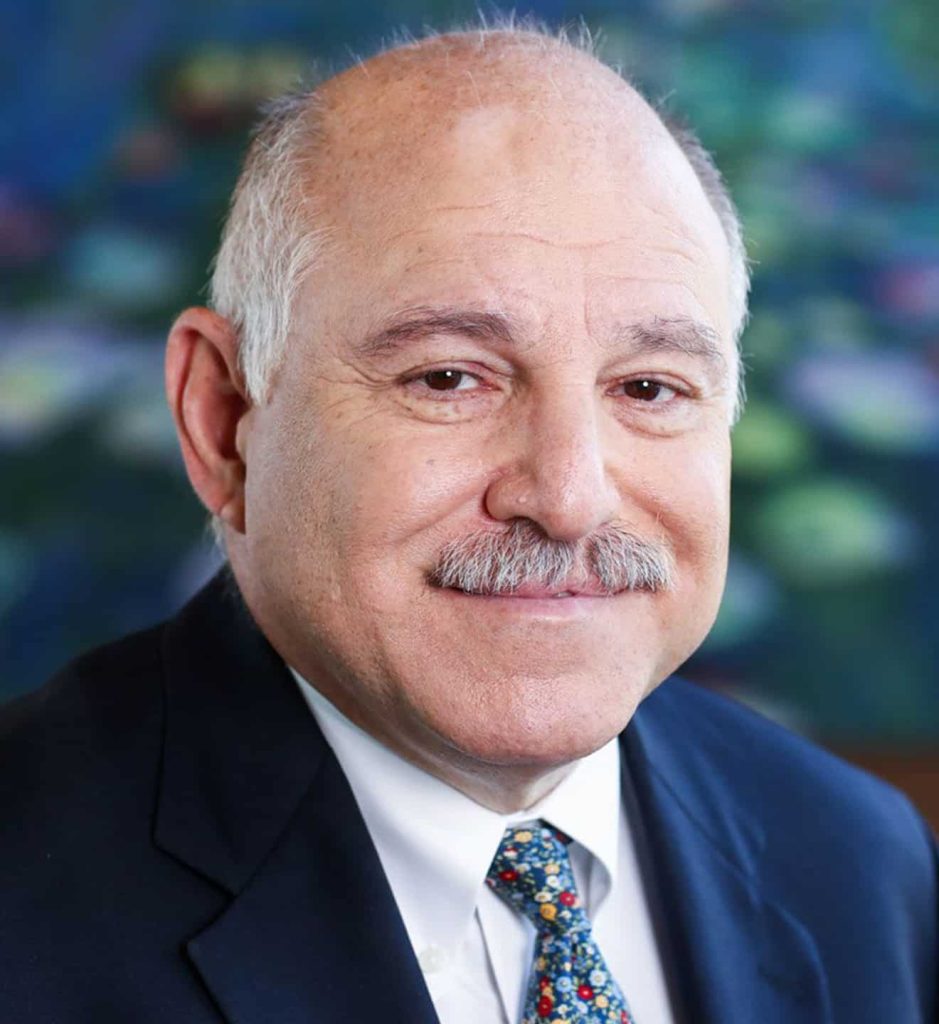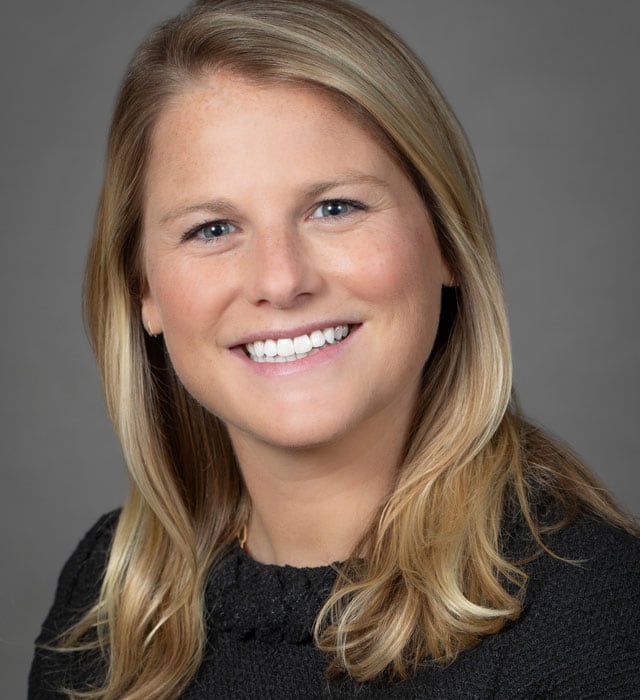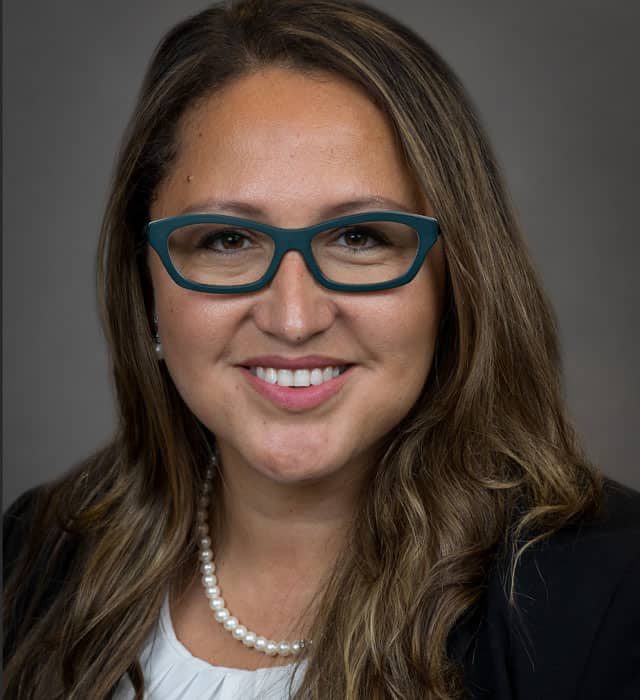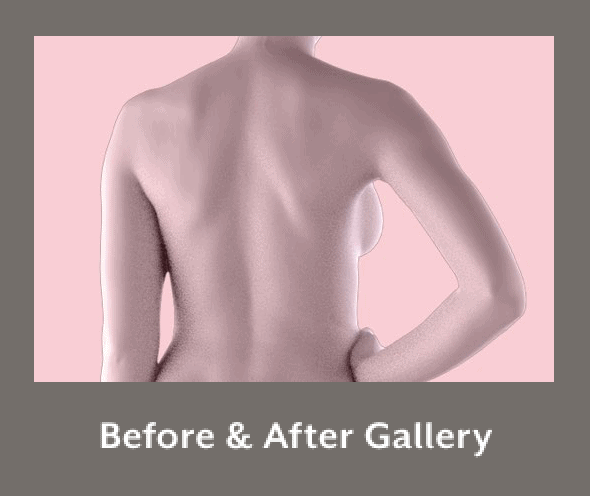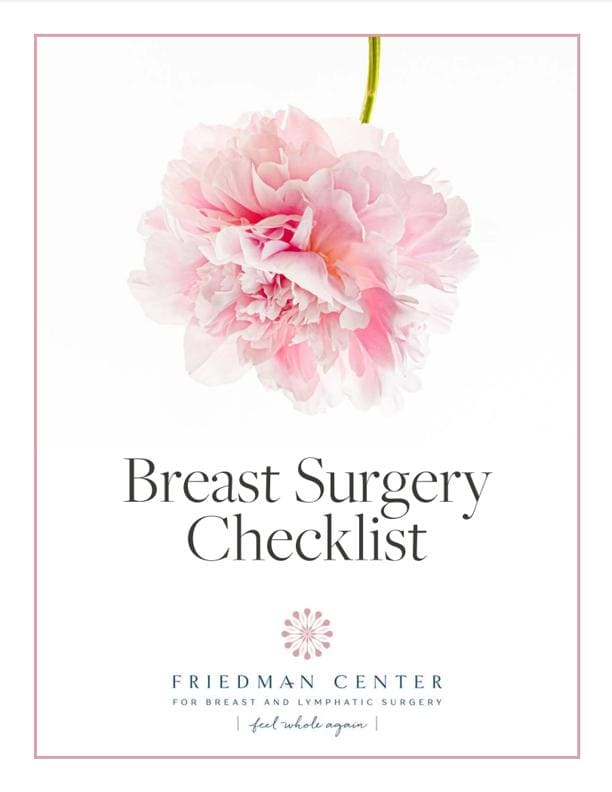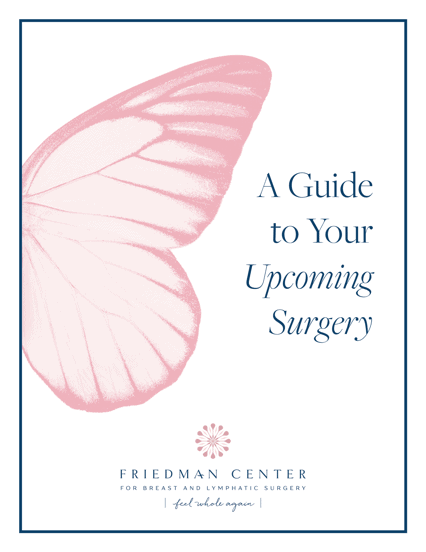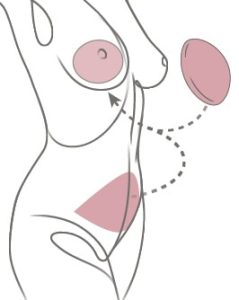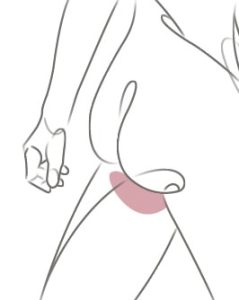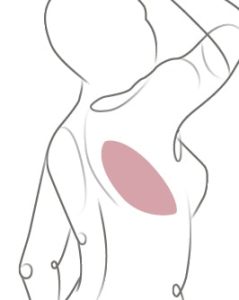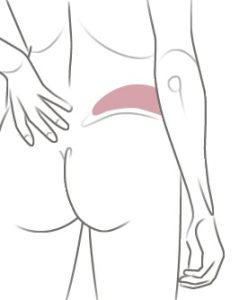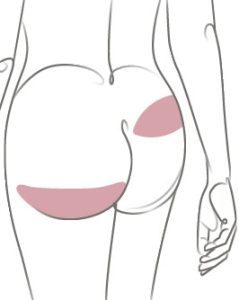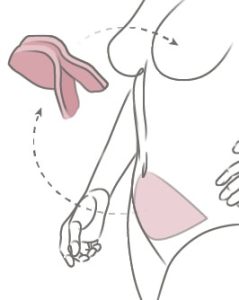About Breast Reconstruction » Natural Tissue (Flap) Reconstruction » Alternative Tissue Sites
Alternative Tissue Sites for Flap Reconstruction
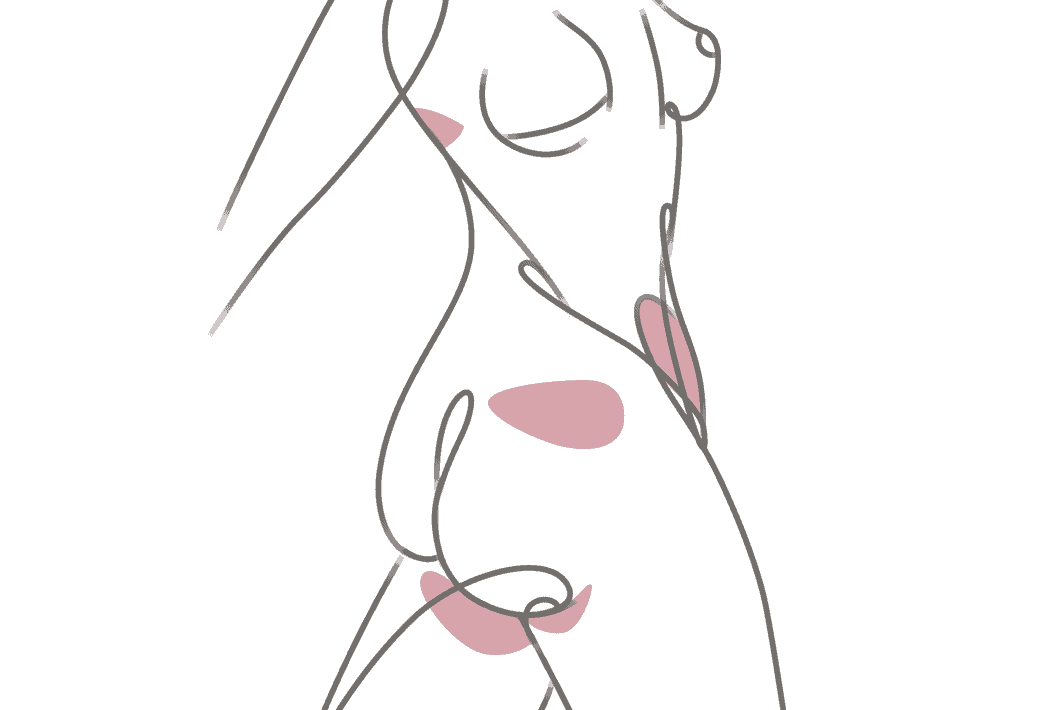
On this page

On this page
The most common flap procedures use tissue from the abdomen for breast reconstruction. For some patients, however, the abdomen may not be the best donor site. You may not be a candidate for abdominal flap reconstruction if:
- Your abdominal tissue has been used for a previous breast reconstruction procedure.
- You have had a caesarean section (c-section) in childbirth.
- You have had other abdominal surgery.
- You have too little belly fat to reconstruct the breast.
- You prefer not to have a long scar across your abdomen.
Alternative Tissue Site Procedures
When the abdomen is not an option, other donor sites can be considered. Common alternate donor sites include the thigh, buttock, or back. In stacked flap reconstruction, multiple flaps from one or more donor sites are combined to create enough tissue for the new breast. Flap tissue may also be combined with a breast implant in a procedure known as combination or hybrid reconstruction.
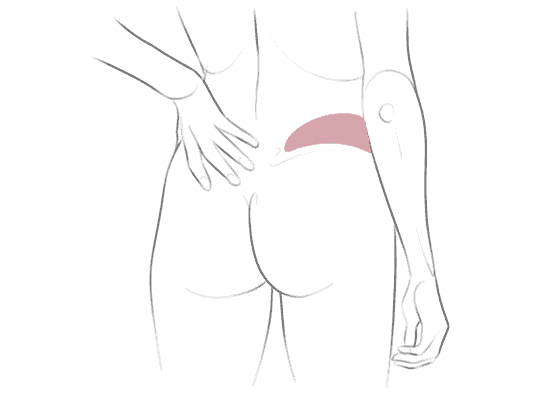
Lumbar flap is the newest donor site for breast reconstruction. Known as a LAP flap procedure, lumbar flaps are created from the upper buttock and waist area (sometimes referred to as the “love handles”) in order to create the breast. The LAP flap is a muscle sparing, free-flap surgery; scarring can usually be concealed by clothing and even a bathing suit. The Friedman Center is proud to be one of the first practices to offer lumbar flap reconstruction.
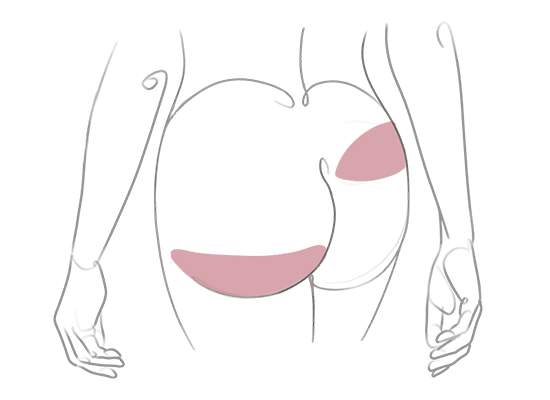
Buttock Flap procedures have the advantage of being muscle-sparing surgeries. The two types of buttock flap procedures, SGAP and IGAP, are both free-flap surgeries, similar to the DIEP flap in abdominal reconstruction. Buttock procedures also leave minimally visible scars that are usually covered by underwear or bathing suit bottoms. While buttock flap reconstruction can result in a “butt lift” effect, you may need liposuction or another procedure to balance out asymmetry in the buttocks.
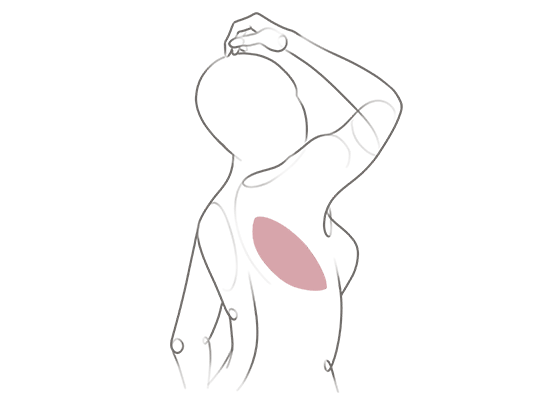
Back flap can be a viable alternative to abdominal flap reconstruction, provided a woman has enough tissue in her upper back to create a flap. Back flap procedures are pedicled flaps, so tissue from the donor site is tunneled under the skin to the chest. The flap retains its original blood supply, but the back muscles may be permanently weakened. Back flaps are usually used to reconstruct smaller breasts or in combination with implants to create more volume.

Thigh Flap reconstruction typically has minimal to no muscle-involvement, which makes the thigh an excellent donor site if the abdomen is not an option. The soft tissue of the upper inner thigh is also good for forming natural-looking breasts. There are several different types of thigh flap, distinguished by the exact location of the donor tissue and the placement of the scar from the procedure. The primary muscle involved in thigh flap reconstruction is the gracilis muscle, and most women do not experience problems from the loss of part of this muscle.
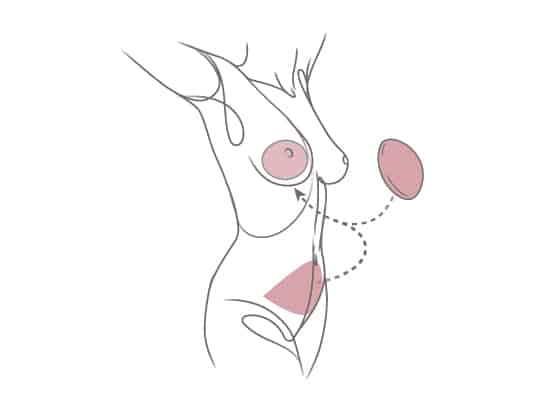
Hybrid Reconstruction, or what we commonly refer to as hybrid flap-implant reconstruction, combines the techniques of flap reconstruction (using your own tissue) and implant reconstruction. Some people feel that it’s the “best of both worlds” in that it provides thin patients with natural-looking, full breasts without requiring the multiple donor sites necessary for stacked flaps or the fat grafting procedures needed to camouflage implants.
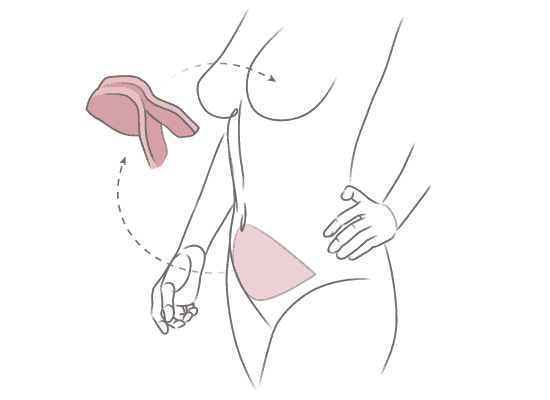
Stacked flap may be used for women who don’t have sufficient fat to create a new breast from a single flap. It may also be used when surgeries or tissue damage have altered the blood supply to a donor site. In a stacked flap procedure, tissue is taken from a donor site, such as the abdomen, buttocks, or thighs, and layered (“stacked”) to create the new breast. Additional sets of vessels are connected so that more tissue can be transferred.
Things to Consider
Here are some things to think about and to discuss with your surgeon:
- Since the most common donor site for flap reconstruction is abdominal tissue, your doctor will likely suggest abdominal flap reconstruction if you are a candidate for it. if you are a candidate for it. If you prefer another donor site due to scar placement or for other reasons, be sure to bring up your concerns during your consultation.
- Having one breast reconstructed may result in asymmetry between the two sides of the body. Additional procedures may be required to restore balance. Your doctor can tell you about your options, such as fat grafting or liposuction.
- Your reconstructed breast size, amount of available tissue, and preferences for scar placement are all factors that can help you decide which alternative donor site may be best for you.
Contraindications and Alternatives
Each donor tissue site has its own set of contraindications. Previous surgery or tissue damage may rule out one or more donor sites for breast reconstruction. Women who are very thin may not have enough tissue to make certain donor sites viable, although stacked flap or hybrid procedures can be good alternatives in those situations.
In general, the abdomen is the preferred donor site for flap reconstruction, usually through the DIEP flap procedure. The abdomen typically provides ample tissue for reconstruction and offer the same result as a “tummy tuck” as an added benefit.




